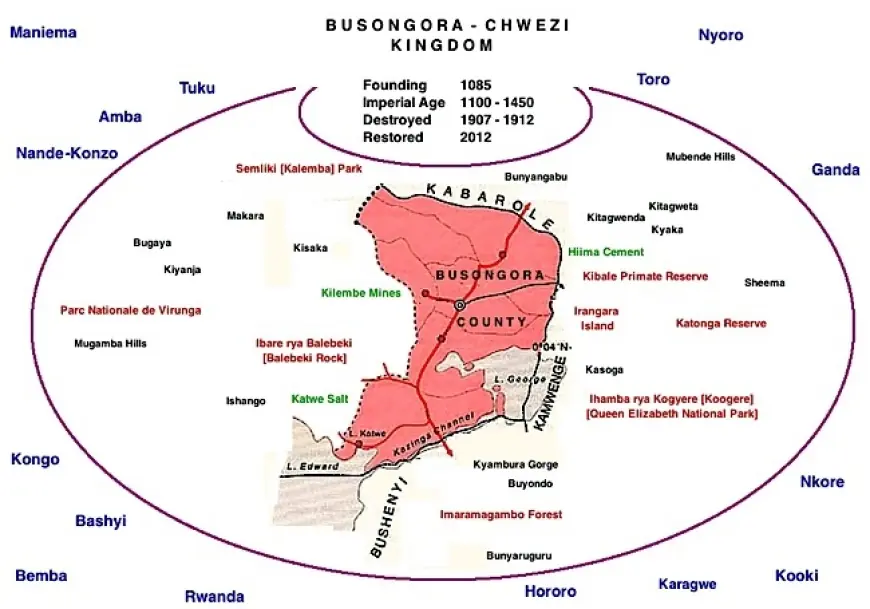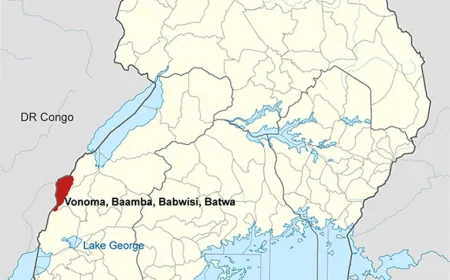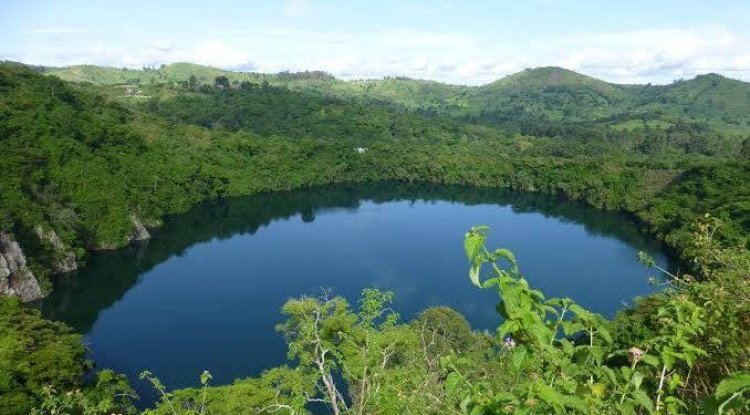The Basongora: A Pastoralist People of Uganda
In this article, we will look at the Basongora people's history, culture, and current position, as well as some of the differences between them and other tribes in Uganda.

The Songora, or Shongorapl. Basongora, sings. Musongora, also known as Huma or "Bahuma," are a traditionally pastoralist people of the Great Lakes region of Central Africa. The Basongora are a cattle-herding minority that inhabits western Uganda and the eastern Democratic Republic of the Congo. Their culture is rich and unique, dating back to the ancient civilizations of the Great Lakes region. . In this article, we will look at the Basongora people's history, culture, and current position, as well as some of the differences between them and other tribes in Uganda.

History of the Basongora
According to oral history, the Basongora descended from the Batembuzi Empire, a mythological dynasty that governed the Great Lakes region prior to the advent of Bantu-speaking peoples. The Basongora claim to be descended from the Bacwezi, a fabled race of rulers and warriors with extraordinary abilities and wealth. Other Ugandan tribes, including the Banyoro, Banyankole, and Batooro, worship the Bacwezi as well.
The Basongora founded their own kingdom, Busongora, in the 12th century. Busongora was a confederacy of various nations linked by a parliament called Muhabuzi and a constitutional monarchy governed by three rulers: an empress dowager (Omu'Gabe'kati), a female ruler (Omu'Go), and a male ruler (Omu'Kama). The Basongora were proficient at iron smelting, salt production, and trade, and their economy was mostly dependent on cattle raising. They also used a complicated system of livestock rituals, divination, and lunar calendars.
The Basongora kingdom peaked in power and influence in the 15th and 16th centuries, when it ruled over a vast territory stretching from the foothills and plains of the Rwenzori and Rutshuru mountain ranges to the coasts of Lakes Edward and Albert. The Basongora had diplomatic and military contacts with other kingdoms in the region, including Bunyoro, Toro, Nkore, Karagwe, and Rwanda. Some of the more important Basongora monarchs are Kyomya Bwachali, who died before 1850 and was the maternal grandfather of King Ntare V of Nkore, and Kasigano, who was the last precolonial king of Busongora and was deposed by the British in 1906.
The entry of European colonialists interrupted the Basongora kingdom, partitioning and dividing their land between the Congo and Uganda Protectorates and annexed sections of it to the Toro and Nkore kingdoms, respectively. The Basongora were also invaded and raided by other groups, including the Banyoro, Bakonzo, and Alur. The Basongora fought colonial control and the loss of their sovereignty, but they were eventually defeated and suppressed.
Culture of the Basongora
The Basongora are a mixed Nilotic/Bantu people that speak Rusongora, an African language that originates from Proto-Kordofanian. Daughter languages of Rusongora include Runyankore, Runyoro, and Rutoro. The Basongora population in Uganda was reported at 15,897 individuals in the 2014 census; however, various community estimates place it between 40,000 and 50,000 people. Some Basongora people live in eastern Congo, where they are known as the Huma or Bahuma.
The Basongora are traditional pastoralists who see their livestock as a source of income, prestige, and identity. The Basongora have a complicated system of cattle breeds, names, and colors, and they engage in cattle rites like milking, bloodletting, and sacrifice. The Basongora have a specific relationship with salt, which they harvest from local salt lakes and utilize as currency, medicine, and a sacred substance. The Basongora are not nomadic; rather, they wander seasonally in search of grass and water for their cattle. They also cultivate crops like millet, sorghum, beans, and bananas.
The Basongora have a distinct social and political structure built on clans, lineages, and age groups. The Basongora clans are exogamous, meaning they do not marry within their own clan, and patrilineal, which means they trace their genealogy and inheritance down to their father. The Basongora clans each have their own totems, emblems, and taboos, and they are governed by clan elders who are in charge of resolving conflicts, keeping order, and preserving traditions.
The Basongora have a gendered division of labor, with men primarily responsible for herding, hunting, and warfare and women for milking, cooking, and childrearing. The Basongora also have a gendered power structure, with men making decisions and leading in the public domain and women serving as counselors and influencers in the private sphere. The Basongora women are revered for their intelligence, strength, and beauty, and they play an important part in the royal succession, as the king is chosen from among the sons of the queen sister. The Basongora also practice polygamy, which allows a man to have more than one wife based on his money and status.
The Basongora people have a rich and diversified culture that is reflected in their art, music, dance, literature, and religion.
Religion.
The Basongora are historically monotheistic, believing in one supreme god, Ruhanga, who created the world and everything in it. The Basongora also believe in spirits, ancestors, and divinities capable of influencing human affairs and nature. The Basongora practice a variety of rituals and ceremonies to commemorate significant events and transitions in their lives, including birth, initiation, marriage, death, and royal coronation. The Basongora worship and converse with supernatural creatures through a variety of shrines, sacred spots, and items.
The resources linked to many of the Busongora's traditional activities are available but difficult to access due to prohibitions on using national parks and the disorder produced by land conflict. Invasive species, such as Lantana camara, have also supplanted several plant species. It is difficult to get wild plants and grasses used in "kuhunda" and "kutona" because they are becoming extinct in many areas.
Basongora is increasingly forced to use plastic beads and pendants, as well as plastic string and other industrial products such as paints, instead of traditional organic pigments and materials such as sisal and elephant nails (which fall off the elephant on their own and are picked up by Basongora; the elephants are not harmed).
However, there is still hope that the Basongora customs will be preserved. Many marriage rites now demand the presentation of traditional presents, such as emigamba (carrying yokes), that have been elaborately decorated using traditional methods. A well-decorated mugamba filled with milkpots and other unique items might cost more than a million Ugandan shillings (about $300).
The inventorying procedure for Basongora culture is currently in its early stages. There is still some work to be done. The following elements of Basongora culture need to be examined and included on the UNESCO list of elements in urgent need of safeguarding:
-
Kuhandiika Kw’enzarrwana (hieroglyphs)—an ancient Songora writing system
-
Omukago (Kunywana): deals with the rite of making blood brotherhood.
-
Kuhembera deals with the sacred and profane uses of fire-mounds in kraals.
-
Kusiigirra Ente deals with the management of calves and milch cattle.
-
Kuchunda deals with the treatment and processing of yogurt and sour milk.
-
Kujumika deals with traditional cooking methods and dietary habits.
-
Kuruka Amabara, which includes dealing with the rites and procedures used in the naming of children, as well as the ritual of “honor known as “engundu” and “enyana” among Basongora but conventionally referred to as “empaako” among communities neighboring the Basongora. It is interesting that these Basongora “honor names” are also the names of ancient Kushite, Egyptian, and Canaanite gods and constellations.
-
Rusaka and other Basongora games: Rusaka is a string game, but Basongora also play Olwango (a variant of chess/mancala). Many games may have originated from rites used in ancient times and still have significance as a means of transmitting social values.
-
Kwetonda deals with the recounting of elaborate genealogical records during public performances and also in formal greetings between people.
Although the list is not exhaustive, it is clear that the field researchers who were trained to examine and document Basongora culture in 2014 will continue to do so even after the pilot program is completed. Furthermore, the history of Busongora, as well as the ornamental and ideographic systems used by the ancient Basongora, has piqued the curiosity of linguists, scholars, and cultural organizations due to UNESCO and cultural institutions in the Busongora Kingdom.
Conclusion
The Basongora are a wonderful people with a long and proud history, a vibrant and diversified culture, and a strong and tenacious spirit. They helped shape the Great Lakes region and maintained their identity and beliefs in the face of adversity and change. They have also demonstrated their willingness and aptitude to adapt and progress, as well as their desire to enhance their current status and future prospects. The Basongora deserve recognition and respect, and they have a lot to give the world.
What's Your Reaction?
 Like
3
Like
3
 Dislike
0
Dislike
0
 Love
1
Love
1
 Funny
0
Funny
0
 Angry
0
Angry
0
 Sad
0
Sad
0
 Wow
1
Wow
1













































































